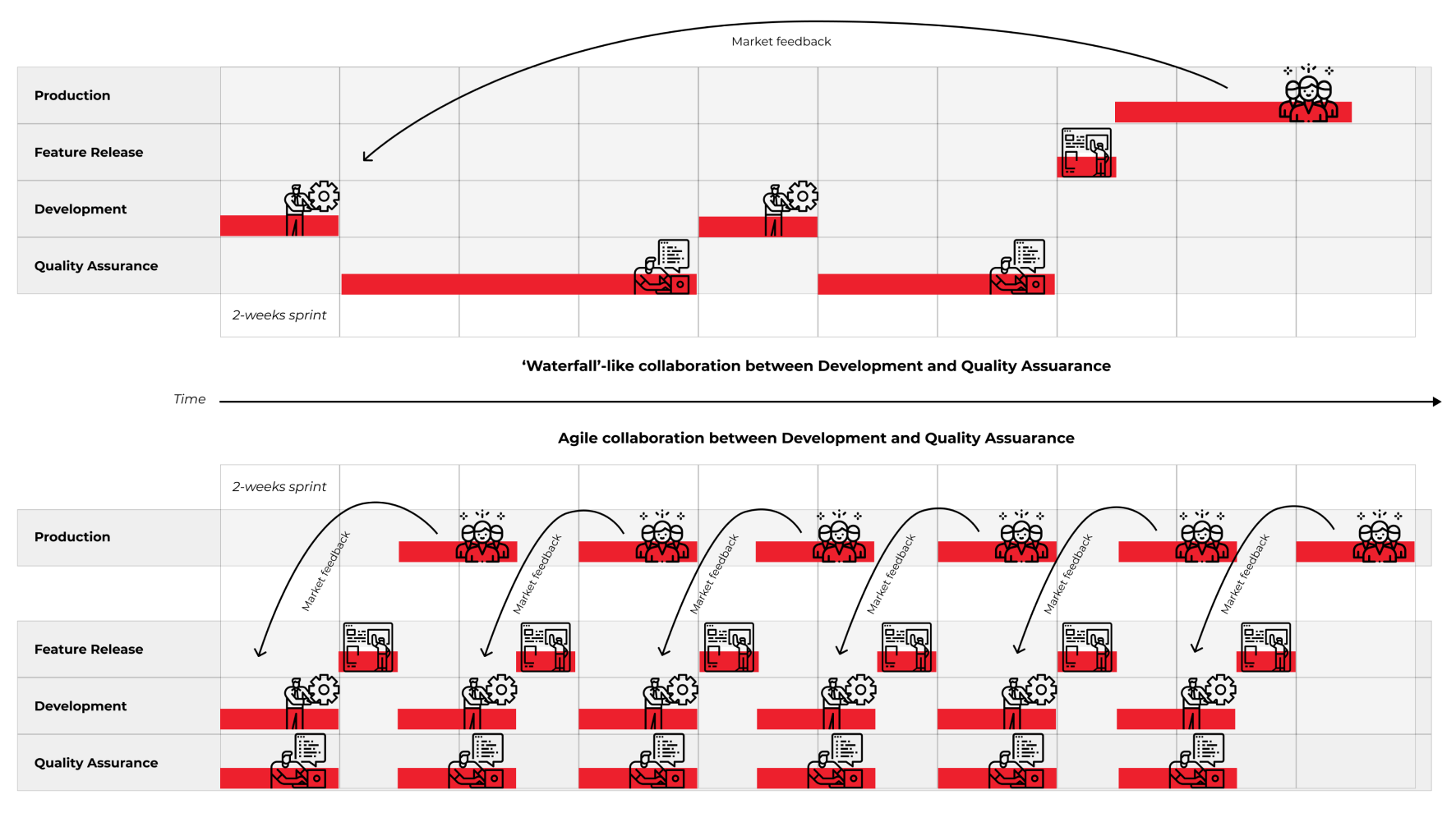Alegeus operates the industry’s largest and most comprehensive consumer healthcare funding platform. Its proprietary technology…
Case Study
MuleSoft Engages Cprime for DevOps Transformation and New QA Automation
Company Details
Industry: IT, software development
Company Size: Over 1,400 employees serving over 1,600 client organizations
Location: Headquartered in San Francisco, CA, USA
Products: iPaaS platform and related services
Cprime Services:
Executive Summary
MuleSoft was growing quickly and needed to accelerate its time-to-market for each new release. They turned to Cprime to attack the problem with a two-pronged approach.

Overview
MuleSoft is a software company headquartered in San Francisco, California, that provides integration software solutions for connecting applications, data, and devices using Application Programming Interfaces (APIs). According to Forrester, MuleSoft users realize a 445 percent ROI within three years while freeing up 90 percent of the time their developers spend on maintaining APIs and integrations. Additionally, the solution has been recognized numerous times as a leader in the Integration Platform as a Service (iPaSS) space.
The Challenge
However, the company was experiencing accelerated growth. Thus, leaders realized their existing development process was no longer keeping pace with the feature release schedule they needed to delight customers and remain competitive in a growing industry.
Their flagship product, the Anypoint Platform, had grown and matured a lot since its introduction in 2006. As a result, the complex system sported numerous interdependencies that were increasingly difficult to track and support. Also, testing the system could sometimes take six to eight weeks for each feature release.
The Solution
While adding headcount to the QA team worked to some extent, it was not sufficient to resolve the situation. They reached out to the experienced team at Cprime to help.
During an initial assessment of the situation, Cprime consultants noted a waterfall-style and highly manual QA process that slowed their otherwise Agile workflow significantly. QA was only beginning their testing once they completed all the coding for any given feature. As a result, feedback from QA might not get back to the developers until code had already been merged and they were on to something new.
Goals going in
The Cprime team devised the following goals for the engagement:
- Significantly decrease the reliance on manual testing and eliminate manual regression testing.
- Reorganize the waterfall-style cooperation between developers and testers, allowing them to work on the same features at the same time.
- Advance the testing performance so that each feature works as expected immediately after merging.
- Decrease the release cycle time and manage the development process to ensure a predictable time to release.
A two-pronged approach
To accomplish these goals, the Cprime team took a two-pronged approach:
- Augmenting MuleSoft’s existing development and QA team with an additional thirteen frontend developers, four QA and test automation engineers, and two project managers.
- Develop a more efficient DevOps-based testing process that would speed the time to release and train the MuleSoft team to carry it out.
Team augmentation
By augmenting the development and QA organizations at MuleSoft, experts from Cprime were able to concentrate on solving the problem without MuleSoft’s existing team falling behind on their ongoing schedule. The Cprime team:
- Unified the UI components library
- Implemented UI components across the integrations platform
- Migrated the platform UI from an outdated React framework to a newer and higher-performing Angular framework
- Maintained and supported the more mature parts of the platform
- Developed modules from scratch
- Created a new codebase
- Implemented a new automated QA testing process and trained the MuleSoft team to make the most of it
Automated QA testing
The new automated testing procedure brought QA closer to the developers and encouraged closer collaboration. They would now work on the same feature simultaneously, defining clear acceptance criteria before development began and running acceptance scenarios before each merge, validating each feature’s adequacy against customer requirements and developer feedback. This new approach allowed them to release a new fully-tested and compatible feature every two weeks.
Three layers of testing were introduced:
- Completely automated testing scenarios
- Partly-automated testing cases that have to be verified manually
- Minimal manual testing
Automated reporting was also introduced to ensure everyone on the team stayed on the same page about results and performance. The new process also improved bug documentation and acceptance testing in Jira.
The Results
Since this engagement began, the program has scaled to several in-house teams at MuleSoft. They’ve seen the benefits of a more collaborative, DevOps-focused process:
- Every two weeks, a fully-tested and functional feature is released.
- Time-to-market has accelerated from several months to just two weeks.
- Unit, functional, and regression testing has now reached over 80 percent of the platform code due to the efficiency of automated testing.
- Feedback from the customer has increased significantly, offering developers faster and more meaningful insights into user expectations.
- The team is now incorporating more advanced continuous deployment practices.


